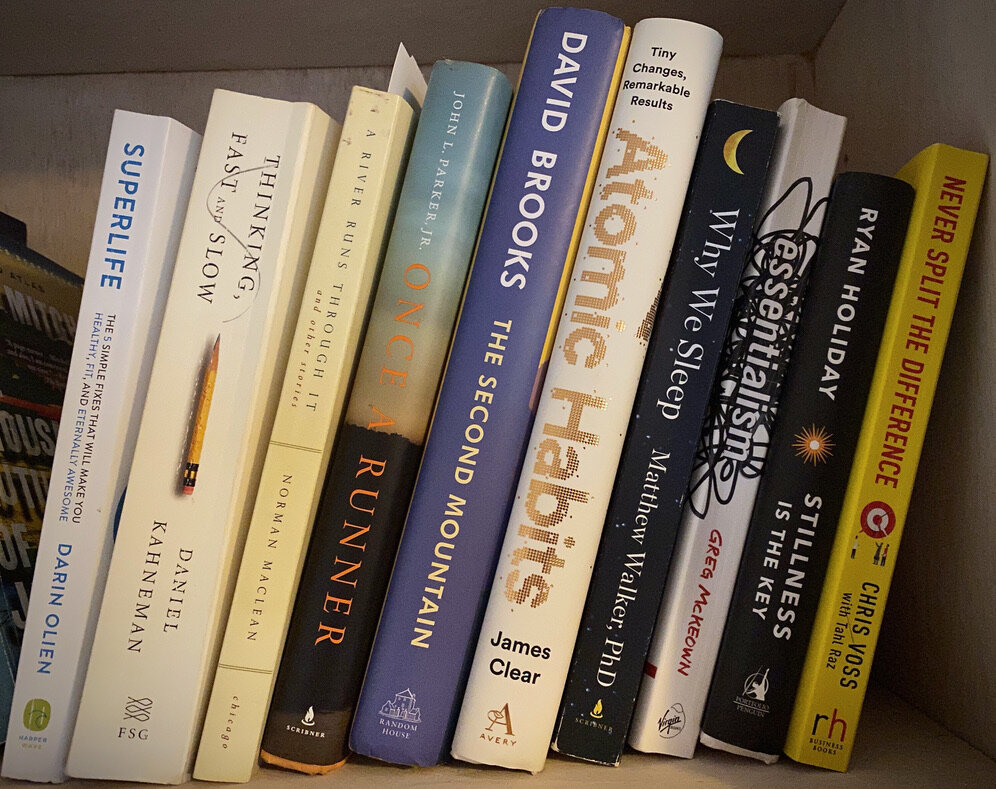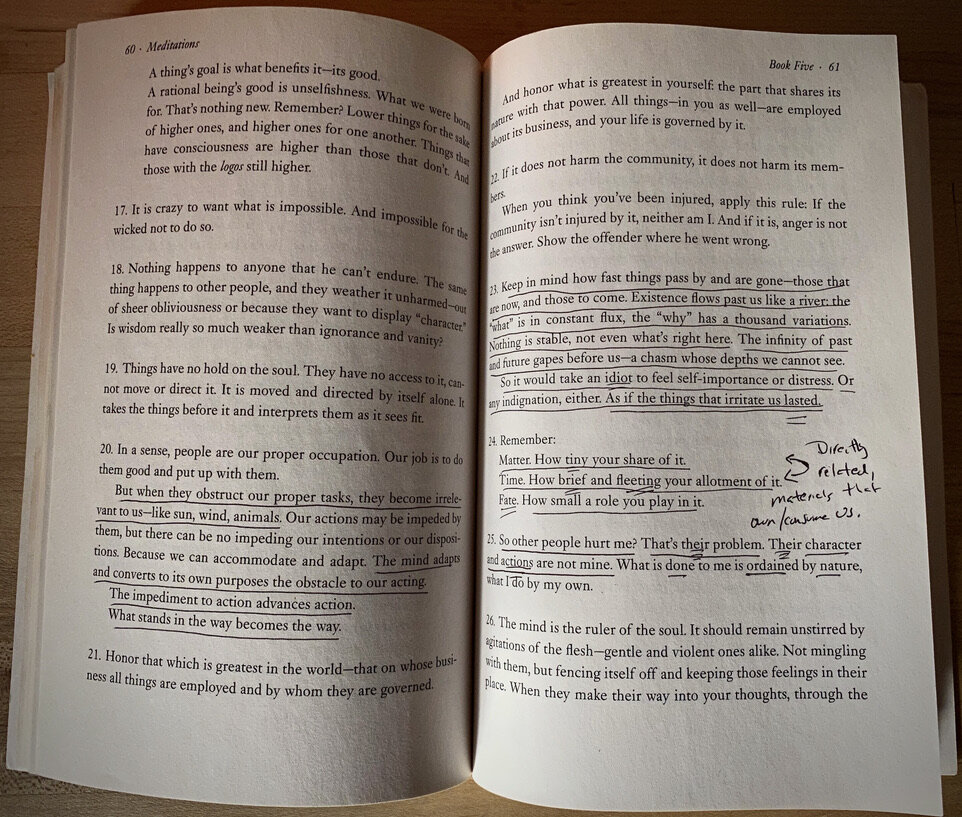
Underlining, marginalia, folding back the pages in books is one of life’s little pleasures. Still seems taboo, even all of these years out of school. I mark up most non-fiction books with underlines, asterisks and notes. This feels right in the moment and helps to solidify concepts or lessons from the book. Interacting with the words, rather than just reading them, is the first step in understanding the material.
Over the years, I became comfortable with mark-up and honing in on important passages. However, while marking up a book last year, I realized I didn’t have practice or method for internalizing whatever I underlined/circled/got-so-excited-about-I-jotted-notes-in-the-margins. I needed to review the text and the lessons.

Hence, the read-again shelf was born; books with important ideas I need to revisit. I’ve read about other people’s methods: Ryan Holiday’s and Dave Perrell’s come to mind.
In theory, I open a book again in front of my computer, two or three weeks after finishing. I’d scan for the underlines and file the lessons/takeaways/etc. in Evernote under Book Notes. And add a new action or reminder to my daily schedule.

There is a strong resistance to starting. It seems like hard work, not nearly as fun as just reading. And the pile isn’t big, maybe seven or eight books. Some of them disappointed me, like Stillness or The Second Mountain, so there can’t be that much information to transcribe. In fact, it may be the opposite; I got mad at the authors while reading and mostly disagree with their ideas.
